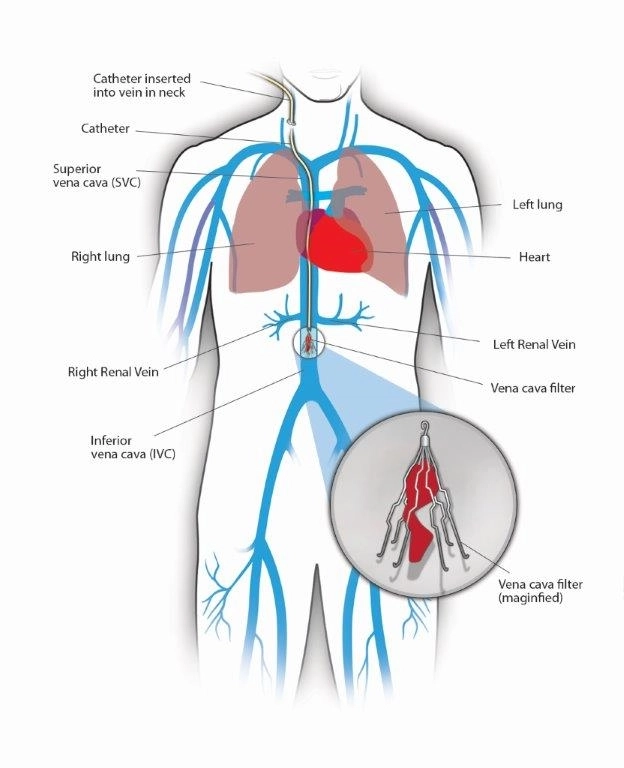

IVC Filter

Placement of Inferior Vena Cava Filter For Pulmonary Thrombo Embolism
The inferior vena cava is the largest vein in your body. It carries blood from your lower body to your heart and lungs. A blood clot in a vein below your heart blocks your normal blood flow and may cause swelling, redness, and pain in the area. Blood clots are treated with blood thinners but some people may not be able to receive this treatment. In those cases, an IVC filter may be placed An IVC filter is a small device that is placed in your inferior vena cava to prevent blood clots from moving through your blood into your lungs. Your IVC filter will be placed by your interventional radiologist. An interventional radiologist is a doctor who specializes in image-guided procedures. They will place the IVC filter in your inferior vena cava by going through a vein in your neck or groin. Your doctor will position the IVC filter in the vein using fluoroscopy (real-time x-rays).The procedure will take about 30 minutes, but you should expect to be in the procedure room for about an hour. You will have a follow-up appointment 4 to 6 weeks after placement to see when your IVC filter can be removed.IVC Filter placement is a well-established method of preventing life-threatening pulmonary thromboembolism, following deep vein thrombosis. The procedure is relatively simple and is completed within 15 minutes, under local anesthesia. The IVC Filter is placed in the IVC below the renal arteries, and the filter helps in trapping large clots that may migrate up into the IVC.

A 26-year-old lady developed deep vein thrombosis in the left leg following the delivery of her firstborn. 2 days later she had severe chest pain and breathlessness. Investigations revealed thrombotic occlusion of the left common iliac vein extending into the IVC. Chest X-Ray demonstrated signs of pulmonary embolism. She underwent placement of an IVC Filter, percutaneously, under local anesthesia via the right femoral vein. She was also started on anticoagulants. She had no further episodes of pulmonary embolism.
Benefits of Inferior Vena Cava Filter:
- No surgical incision is necessary—only a small nick in the skin that does not need stitches.
- The filter has a high rate of success in protecting the lungs from serious pulmonary embolus (PE) in patients who have failed conventional medical therapy or cannot be given conventional medical therapy.

